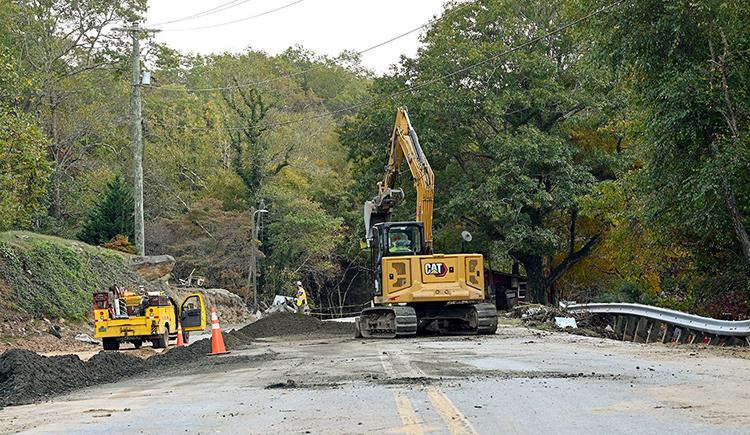
More than 600 roads across North Carolina have reopened, but North Carolina Department of Transportation officials said it will be a long time before the recovery from Hurricane Helene is complete.
Officials said Helene left unprecedented damage the western part of the state when it traveled up from Florida and hit the Appalachian region on Sept. 26 and 27. Workers have made steady progress, officials said. Still NCDOT has identified nearly 7,000 sites where roads and bridges are damaged. The state had nearly 600 road closures as of Monday, with 100 of those on interstates, as well as state and federal highways. The department is closures remain on I-40, US 64, US 19, NC 215, NC 226 and NC 197. The number of road closures could rise, officials said, as the state agency continues its assessment.
“Damage estimates from what we have been able to assess to this point are up to several billion dollars and we’re not done,” NC Transportation Secretary Joey Hopkins said. “The damage to our roads and bridges is like nothing we’ve ever seen after any storm, and this will be a long-term recovery operation. But we will be here until Western North Carolina can get back on its feet.”
Crews and contractors have nearly completed operations to cut and move debris to the shoulders so they can open roads. Those “cut and shove” crews have created more than 4,100 debris sites, officials said. The department has reopened 600 roads, mostly in Western NC, including I-40 near Old Fort and in downtown Asheville, I-26 in Henderson and Polk counties, and US 221, US 321, and US 421 in the Boone area, and US 70 and US 25 in Asheville.
Hopkins said the agency is making headway on I-40 with the awarding of $10 million contract to Wright Brothers Construction to stabilize the westbound lanes of I-40 at Pigeon River Gorge. Officials said they are working with Tennessee transportation officials and the Federal Highway Administration to develop long-term planning for reconstructing I-40 in the gorge.
Additionally, the state said it was focusing on restoring power. As of Monday, there were more than 19,000 places without power in Western North Carolina – down from over 1 million after the storm. Officials said crews are being intentional in their work with utilities to get roads open so power can be restored.
NCDOT said more than 2,000 agency employees are working on the recovery operations, with more than 230 of them being deployed from the eastern and central part of the state. The NC Division of Motor Vehicles has 50 employees in its License and Theft Unit providing security in seven mountain communities, officials said.
The agency is still asking people not to travel to the western part of the state unless they are local, responding to the recovery effort or have essential travel needs.
“Non-essential traffic continues to hinder our efforts to reopen roads,” Hopkins said. “Many of our crews are having to stop work to allow traffic through damaged areas. We’re working as hard as we can, but we need most of these travelers to use alternate routes outside of the impacted areas to get through and around Western North Carolina.”